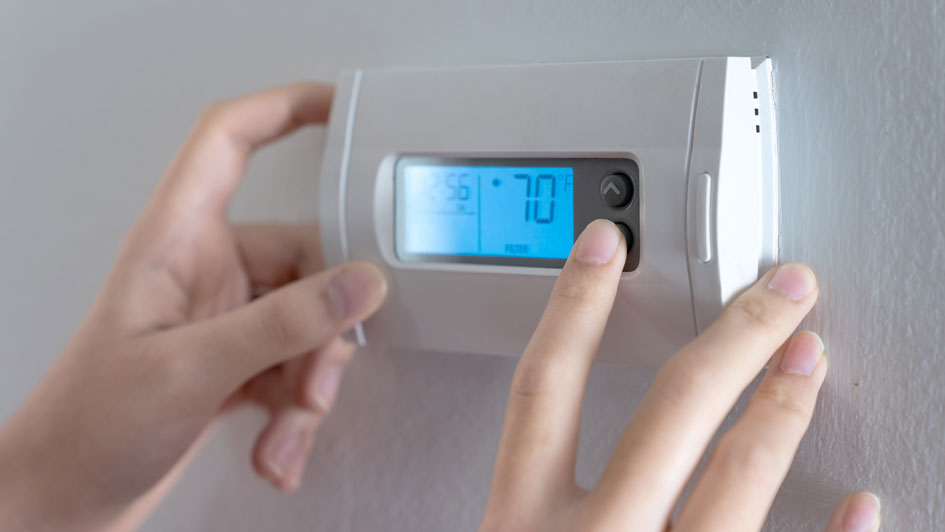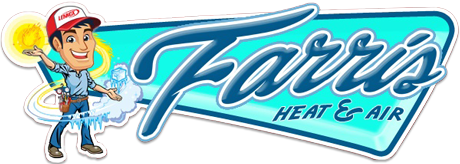
We all like saving money on our monthly utility bills, but you should know there’s a way to lower energy use, even when you're not even home.
It starts with your thermostat. By making the most out of your thermostat, you can structure its daily schedule around your personal preferences. You can create a number of automated temperature settings for when you’re home, away or even when you’re sleeping.
If you're willing to make these adjustments, you have more time to enjoy pleasant temperatures while cutting down your energy bills. Take a look at a few ways your thermostat can be a source of energy savings:
While at Home
Pretty much whenever you're home, you want comfortable temperatures. For the most part, you probably have your thermostat lower in the summer if you're indoors to make the most of the cool air.
But the ideal temperature for the summer is usually between 78 and 80 degrees Fahrenheit. This way, you can stay cool while still keeping your energy bills low.
While Gone
If you're setting the temperature for when you are out of the house in summer, it’s advantageous to set the thermostat higher than you would if you were in the house.
Depending on the local climate or your home's location, you can set the thermostat to higher temperatures like 88 degrees while no one is home before lowering it back to the sweet spot of 78-80 degrees when you or a family member return. This way, your air conditioning unit won’t be working overtime to keep an empty house cool.
While Asleep
When it comes to sleeping in the summer, you want a temperature that's nice and cool. A good rule of thumb is between 68-72 degrees Fahrenheit. There's less risk of getting too hot or too cold when you are trying to get some rest.
Other Ways to Use Less Energy:
- Put in a smart thermostat: Switching to a smart thermostat in the summer helps save money on energy costs as it forms temperature schedules according to your lifestyle and home environment. A smart thermostat manages the temperature if you are home or sleeping, while allowing it to get warmer when no one is around. With models like the Lennox iComfort, you can adjust the temperature remotely through your smartphone, tablet or laptop. Planning smart thermostat installation in your Bartlesville home is an effortless way to set the correct temperature whether you're at home or across the country.
- Update your existing HVAC system: A new HVAC system saves money right from the start. With greater energy efficiency, your utility bills will be lower because it requires less energy to heat and cool your home. Air conditioning installation in Bartlesville is only a phone call away, so don't hesitate to reach out to local pros like Farris Heating & Air who can set you up for success.
- Keep up with AC maintenance: Hiring a skilled professional to perform regular air conditioning maintenance in Bartlesville can have a significant impact on your utility bills. If you stay on top of cleaning key components like the coils, checking for damage and clearing air vents of dust and debris, you may notice your HVAC system run more efficiently. Higher energy efficiency will also reduce strain on important or delicate components and lowers operational costs, resulting in lower energy usage and subsequently, smaller bills.
- Replace your air filter regularly: A regular schedule for cleaning or replacing the HVAC system's air filter saves money by improving airflow. When filters are clogged with dirt and debris, your air conditioner will have to work harder, and the strain can reduce the system’s life span and lead to breakdowns.
- Confirm your attic is sufficiently insulated: Insulation is a vital part of maintaining an energy-efficient home, securing the hot air outside and the cool air inside over the summer. The North American Insulation Manufacturers Association (NAIMA) offers an official recommendation stating homeowners in souther states should possess at least 13-14 inches of insulation, while colder climates do better with 16-18 inches.
- Check your air ducts: Leaky ductwork can raise your energy bills much more than 20 percent, plus it can potentially allow harmful emissions from your water heater, clothes dryer and other appliances to get into the atmosphere of your home. Watching for signs of leaks and sealing them can address both concerns.
- Seal all other leaky spots in your home: Sealing up other leaks in your home with caulk, foam sealant or weather-stripping keeps temperatures a little cooler on hot summer days. You should also check for any gaps around windows, doors and even outdoor fixtures. Devoting time and effort to sealing leaks now can help you save a lot over time.
